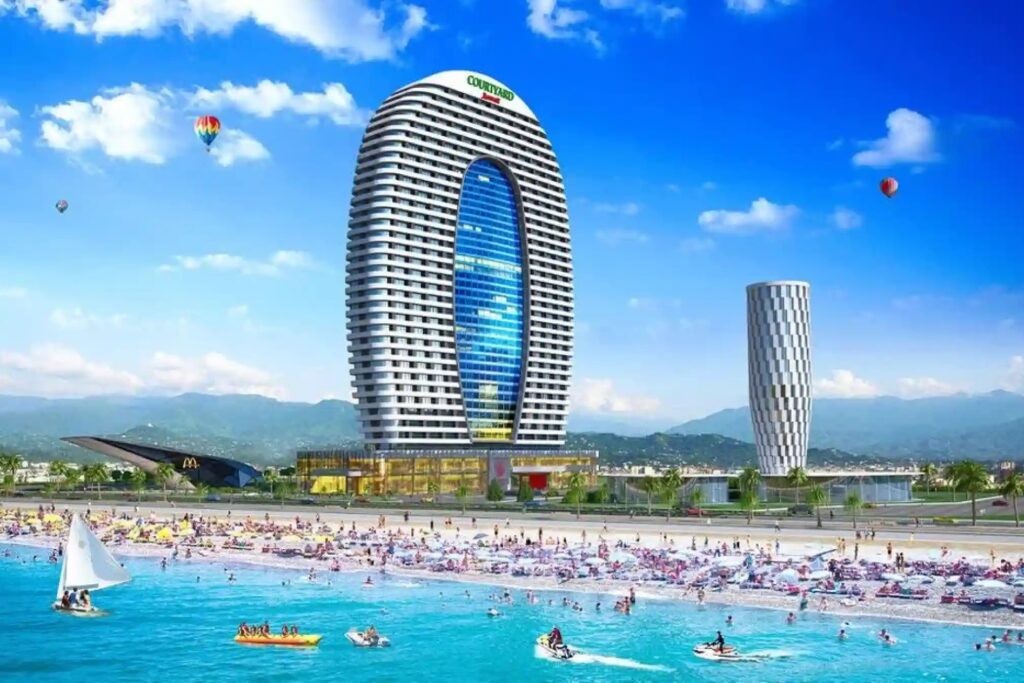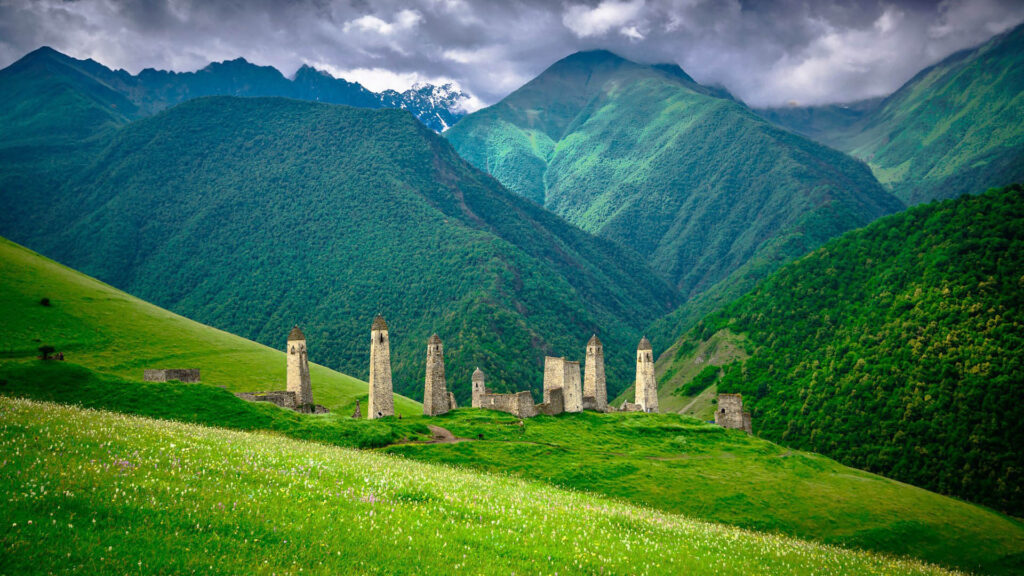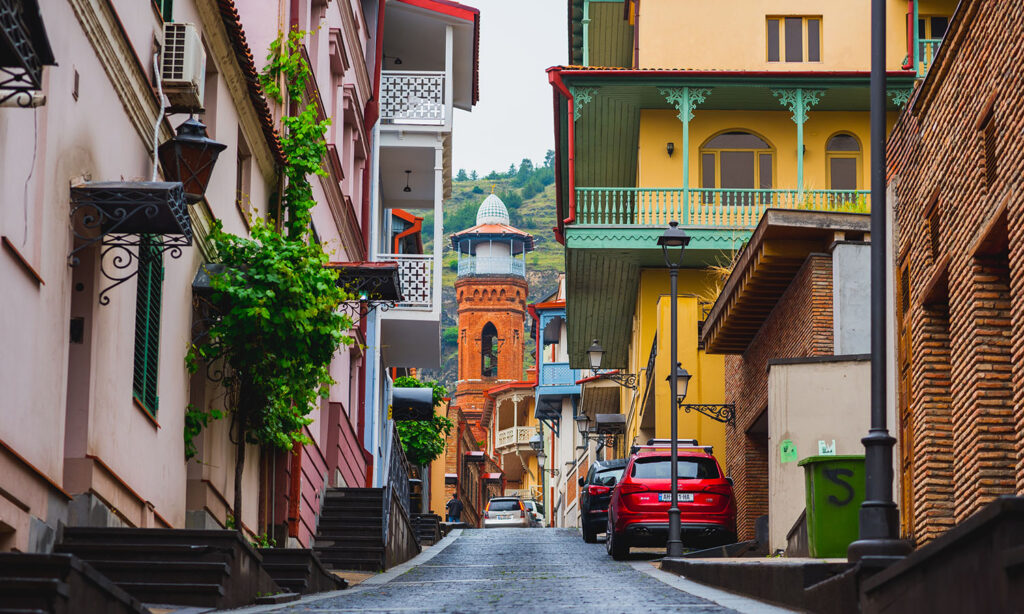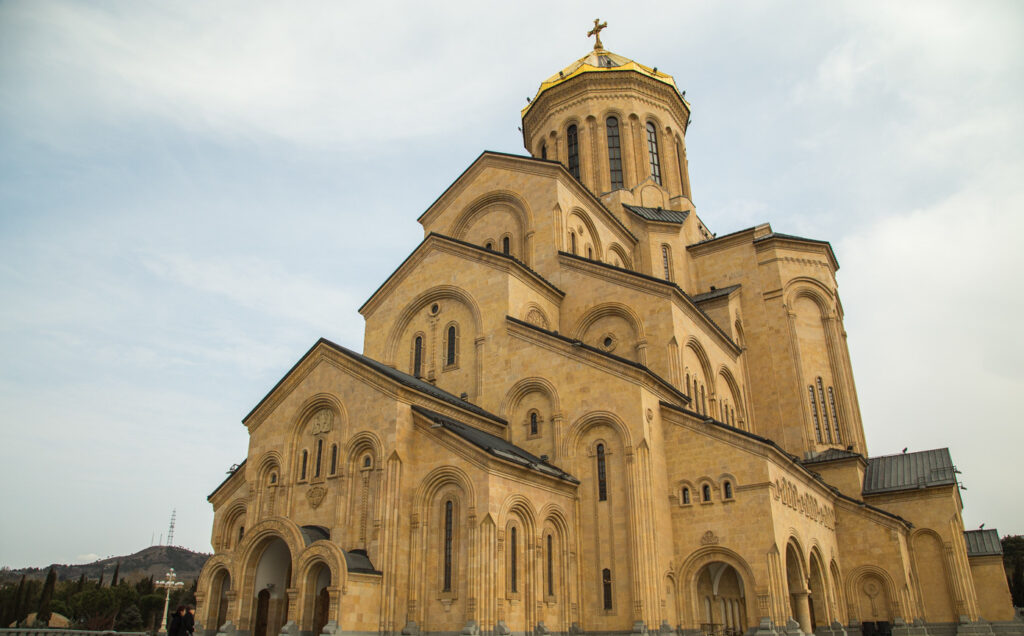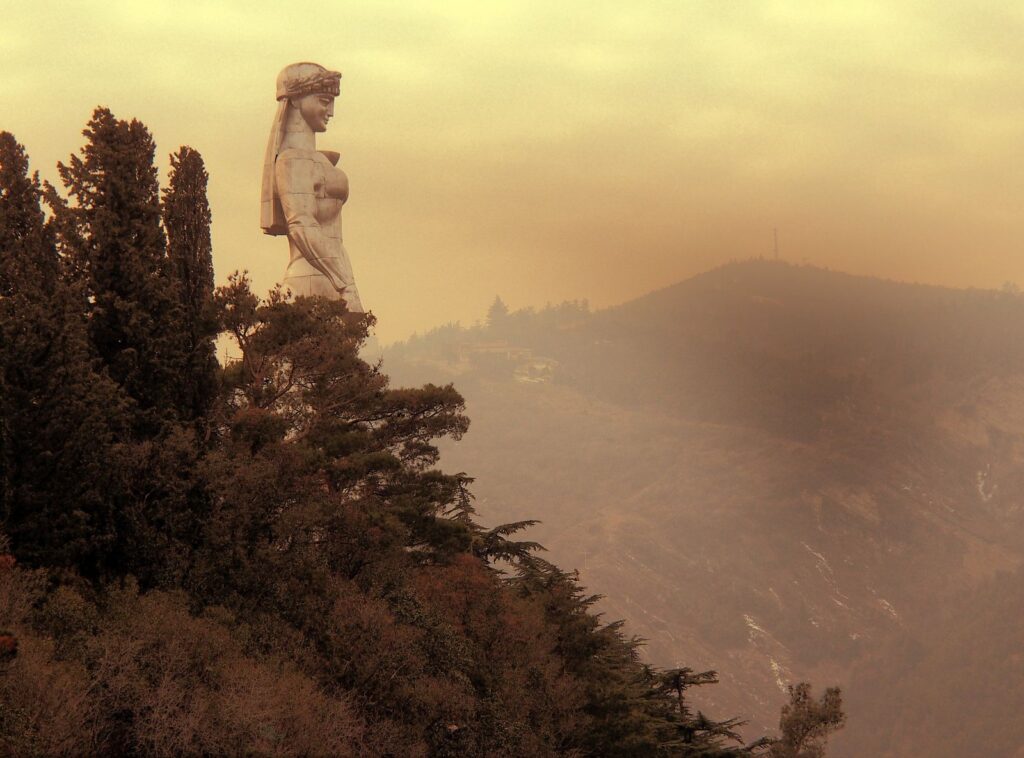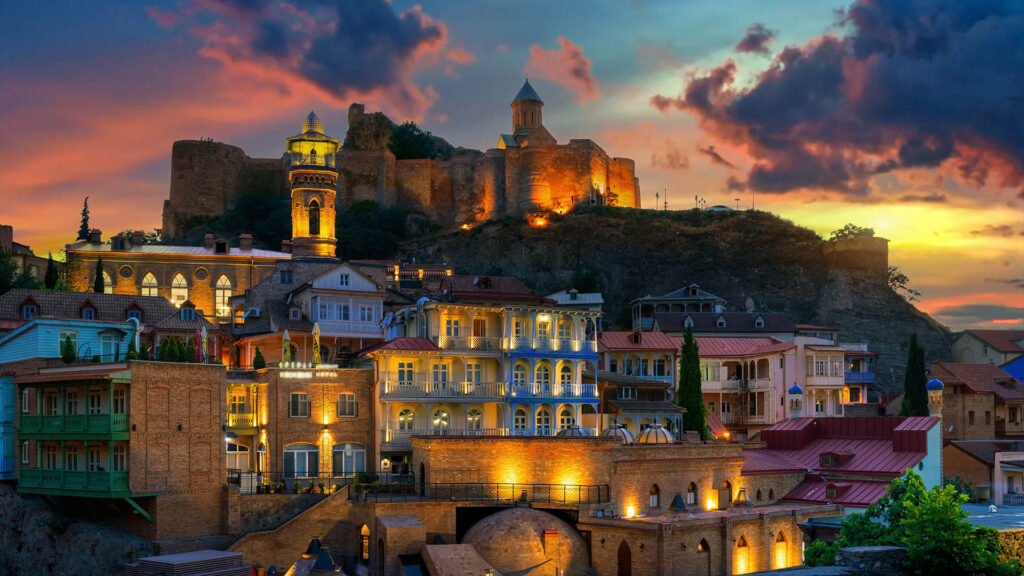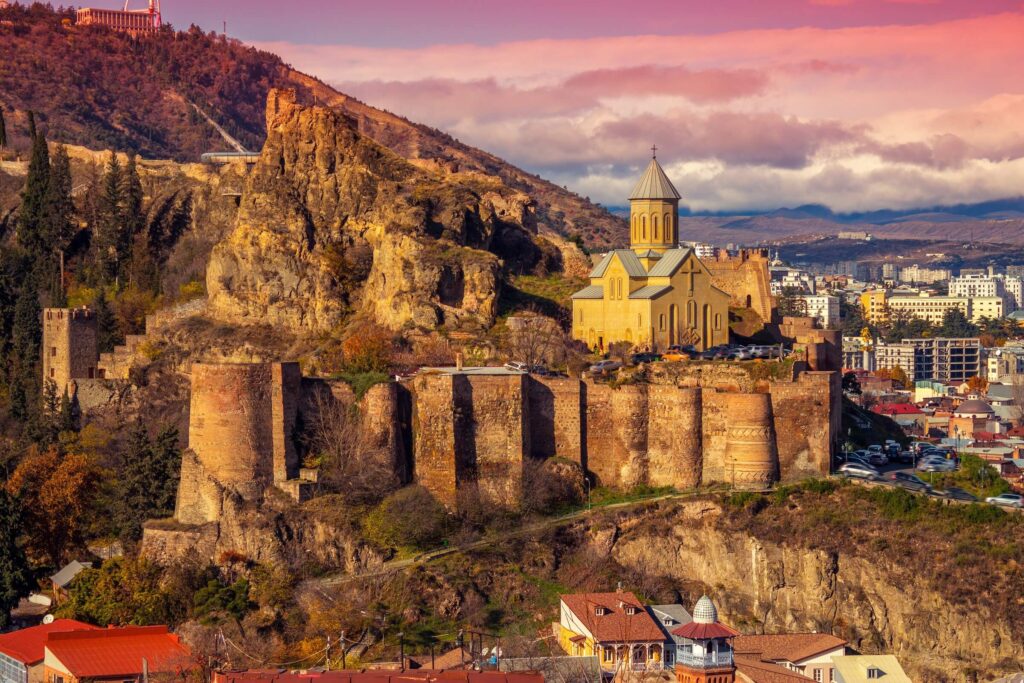Introducing The Peace Bridge of Tbilisi
Spanning the Mtkvari River in the heart of Tbilisi, the Georgian capital, stands the Peace Bridge, a magnificent and modern structure that has become an iconic landmark and symbol of the city’s ongoing transformation. This striking architectural marvel, with its unique and captivating design, has not only captured the imagination of visitors but also holds a profound significance in the hearts and minds of the Georgian people.
The Peace Bridge is more than just a functional piece of infrastructure; it is a testament to Tbilisi’s resilience, its embrace of modernity, and its unwavering commitment to fostering unity and connection within the city. This article will delve into the story behind the Peace Bridge, exploring its design, history, and the role it plays in shaping the cultural and social fabric of Tbilisi.

The Peace Bridge of Tbilisi: A Symbol of Unity and Transformation
The Conception and Design of the Peace Bridge
The idea for the Peace Bridge first took shape in the early 2000s, during a time of significant change and transformation in Tbilisi. The city, emerging from the challenges of the post-Soviet era, was eager to reinvent itself and showcase its potential as a modern, forward-thinking, and globally-connected urban center.
The Winning Design
In 2004, the Georgian government launched an international competition to design a new bridge that would span the Mtkvari River, connecting the historic Old Town with the rapidly developing Rike Park. The winning design, submitted by Italian architect Michele de Lucchi, was a bold and innovative concept that would go on to shape the iconic structure we see today.
De Lucchi’s vision was to create a bridge that would not only serve as a functional connection but also serve as a work of art, a living symbol of Tbilisi’s aspirations. The design incorporated a unique, asymmetrical form, with a single, gracefully curved steel arch supporting the pedestrian walkway and providing a dramatic visual statement against the city’s skyline.
The Construction and Unveiling
The construction of the Peace Bridge was a complex and challenging undertaking, requiring the collaboration of international engineering firms, local contractors, and a dedicated team of workers. The project was completed in 2010, and the bridge was officially unveiled to the public, quickly becoming a source of immense pride and excitement for the people of Tbilisi.
The immediate impact of the Peace Bridge was palpable, as it transformed the cityscape and became a magnet for both locals and visitors. The bridge’s striking design, combined with its strategic location, made it an instant photographic landmark, and it quickly became one of the most recognizable symbols of Tbilisi.
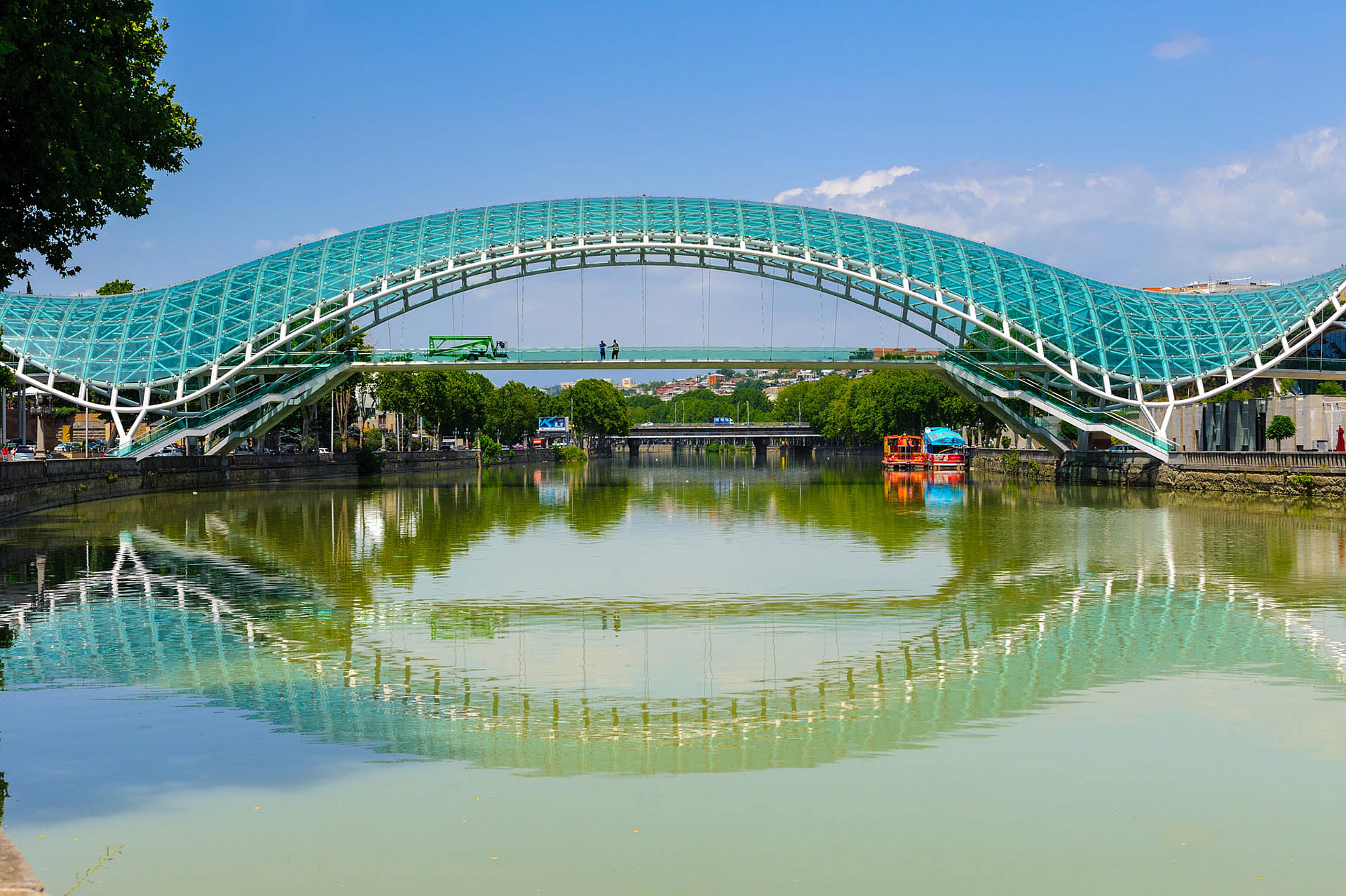
The Peace Bridge of Tbilisi: A Symbol of Unity and Transformation
The Significance of the Peace Bridge
The Peace Bridge is more than just a remarkable feat of engineering and design; it is a symbol that resonates deeply with the people of Georgia, capturing the country’s aspirations for unity, progress, and a brighter future.
The Symbolic Meaning
The name “Peace Bridge” is a direct reflection of the bridge’s intended purpose – to serve as a unifying element, connecting the two sides of the Mtkvari River and, by extension, the diverse communities and neighborhoods of Tbilisi. This symbolic significance is further emphasized by the bridge’s distinctive design, which features a single, sweeping arch that appears to embrace the city, with its illuminated walkway serving as a beacon of light and connection.
For many Georgians, the Peace Bridge represents the country’s journey from a tumultuous past to a more stable and prosperous future. The bridge’s inauguration in 2010 coincided with a period of renewed optimism and national pride, as Georgia emerged from the challenges of the post-Soviet era and set its sights on a more secure and harmonious path.
The Transformation of Tbilisi
The construction of the Peace Bridge was a pivotal moment in Tbilisi’s ongoing transformation, as the city sought to redefine its identity and embrace a more modern, innovative, and globally-connected vision. The bridge’s strategic location, connecting the historic Old Town with the newly developed Rike Park, symbolized the city’s efforts to bridge the gap between its rich cultural heritage and its aspirations for the future.
The impact of the Peace Bridge on the city’s urban landscape and infrastructure has been significant. The bridge has become a hub of activity, with the surrounding area transformed into a vibrant public space that attracts locals and visitors alike. The development of Rike Park, which includes a concert hall, cultural center, and various recreational amenities, has further reinforced the bridge’s role as a catalyst for Tbilisi’s urban regeneration.
The Cultural and Social Significance
Beyond its physical and symbolic significance, the Peace Bridge has also become deeply embedded in the cultural and social fabric of Tbilisi. The bridge has become a gathering place for the city’s residents, who use it as a venue for various cultural events, festivals, and public gatherings.
The bridge’s distinctive lighting design, which features a constantly changing array of colors and patterns, has also contributed to its cultural significance. The illuminated bridge has become a canvas for artistic expression, with the lighting often used to commemorate important events, holidays, or to raise awareness about social and political issues.
The Peace Bridge has also become a hub for the city’s vibrant arts and cultural scene. The surrounding area is home to numerous art galleries, performance spaces, and creative hubs, all of which have been drawn to the bridge’s iconic status and the energy it generates.
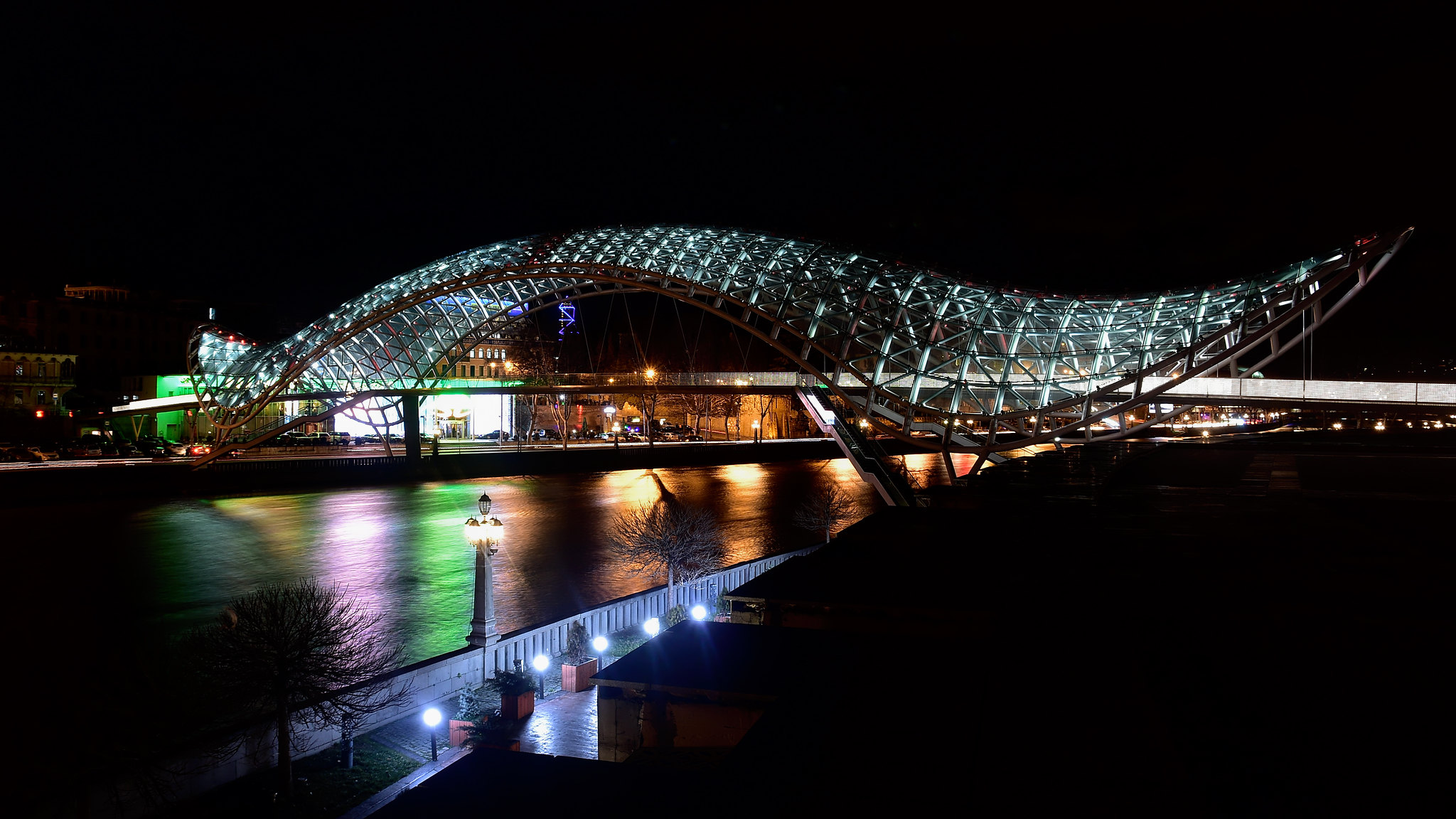
The Peace Bridge of Tbilisi: A Symbol of Unity and Transformation
Experiencing the Peace Bridge
For those visiting Tbilisi, a visit to the Peace Bridge is an essential part of any itinerary. The bridge offers a unique and multifaceted experience, allowing visitors to engage with the city’s history, culture, and contemporary identity.
Architectural and Design Appreciation
The Peace Bridge is a true masterpiece of modern architecture, and visitors are often struck by the sheer elegance and boldness of its design. The bridge’s asymmetrical form, with its single, graceful arch, is a testament to the skill and vision of its Italian designer, Michele de Lucchi.
Visitors can take the time to admire the bridge’s intricate details, such as the seamless integration of the steel structure and the glass-enclosed walkway, which offers stunning views of the Mtkvari River and the surrounding cityscape. The bridge’s innovative lighting design, which can be programmed to create a variety of mesmerizing visual effects, adds to the overall sense of wonder and enchantment.
Exploring the Surrounding Area
The Peace Bridge is not just a standalone attraction; it is part of a larger network of public spaces, cultural institutions, and recreational amenities that have transformed the area around the Mtkvari River. Visitors can explore the adjacent Rike Park, which features a modern concert hall, art galleries, and a range of outdoor activities, such as walking, cycling, and picnicking.
The historic Old Town, with its winding streets, centuries-old architecture, and lively cafes and shops, is also within easy reach of the Peace Bridge, allowing visitors to immerse themselves in the rich cultural heritage of Tbilisi.
Experiencing the Bridge’s Cultural Significance
For those interested in the cultural significance of the Peace Bridge, there are numerous opportunities to engage with the city’s vibrant arts and events scene. The bridge regularly hosts concerts, festivals, and public gatherings, which allow visitors to experience the bridge as a dynamic, living part of Tbilisi’s cultural landscape.
Visitors can also learn about the bridge’s symbolic meaning and its role in the city’s transformation by joining guided tours or visiting the various educational and informational displays located throughout the area.
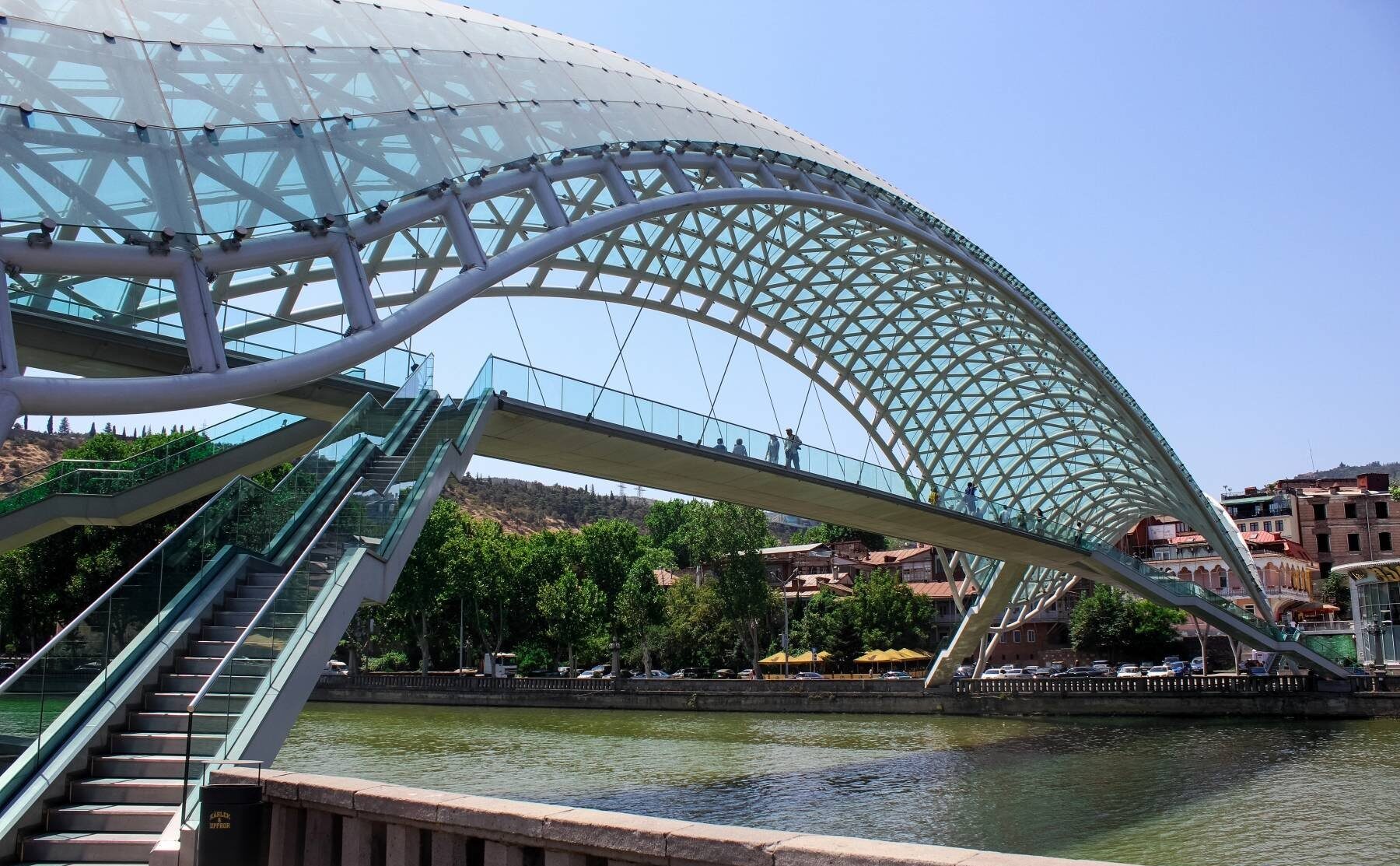
The Peace Bridge of Tbilisi: A Symbol of Unity and Transformation
The Future of the Peace Bridge
As Tbilisi continues to evolve and transform, the Peace Bridge remains a central and enduring symbol of the city’s aspirations and resilience. While the bridge has already made an indelible mark on Tbilisi’s identity, its future role in shaping the city’s development and cultural landscape remains a topic of ongoing discussion and planning.
Preserving the Bridge’s Legacy
One of the key challenges facing the Peace Bridge is ensuring that its legacy and significance are preserved and celebrated for generations to come. This will require ongoing maintenance, conservation efforts, and the thoughtful integration of the bridge into the city’s wider urban planning and development strategies.
Initiatives to protect the bridge’s unique design, enhance its public amenities, and promote its cultural and educational value will be crucial in ensuring that the Peace Bridge continues to serve as a source of pride and inspiration for the people of Tbilisi.
Adapting to Changing Needs
As Tbilisi’s population and urban landscape continue to evolve, the Peace Bridge will need to adapt to the changing needs and expectations of both residents and visitors. This may involve the integration of new technologies, the expansion of public spaces and amenities, and the exploration of innovative ways to engage with the city’s diverse communities.
By embracing a forward-thinking and collaborative approach to the bridge’s development, Tbilisi can ensure that the Peace Bridge remains a vital and dynamic part of the city’s cultural and social fabric, serving as a bridge not only between the two banks of the Mtkvari River but also between the city’s past, present, and future.
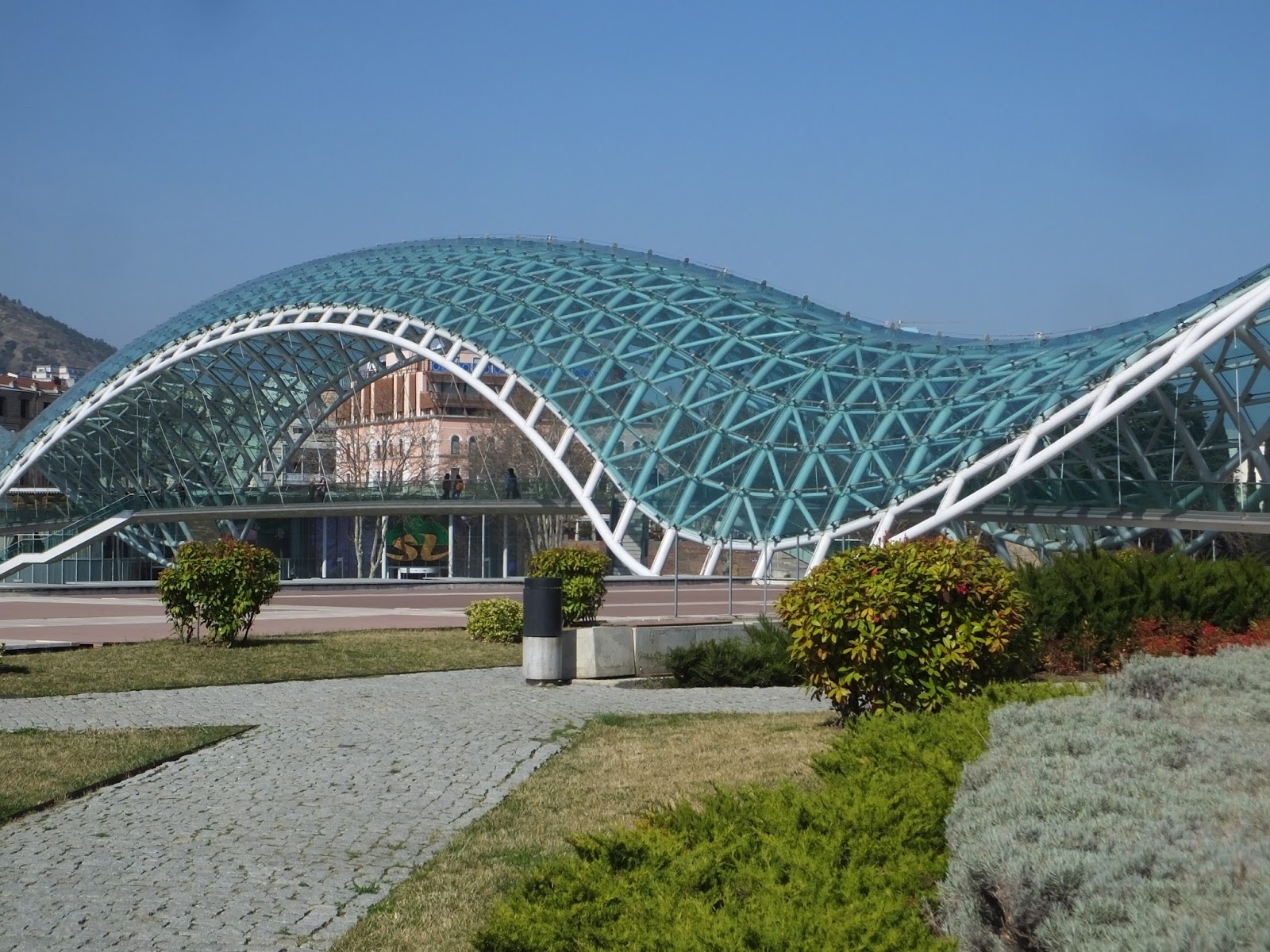
The Peace Bridge of Tbilisi: A Symbol of Unity and Transformation
Conclusion
The Peace Bridge of Tbilisi is a remarkable achievement, a testament to the city’s resilience, creativity, and ambition. As a symbol of unity, progress, and cultural identity, the bridge has become an integral part of Tbilisi’s landscape, captivating the hearts and minds of locals and visitors alike.
Through its striking design, rich symbolism, and multifaceted cultural significance, the Peace Bridge has become a touchstone for the city’s transformation, a beacon of hope and inspiration that continues to shape the identity and aspirations of Tbilisi. As the city looks to the future, the Peace Bridge will undoubtedly remain a central and enduring part of its story, a bridge that connects the past, present, and future in a seamless and captivating display of Georgian resilience and innovation.

